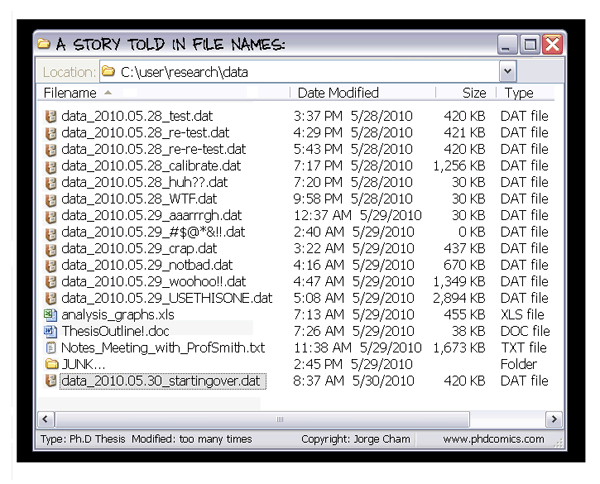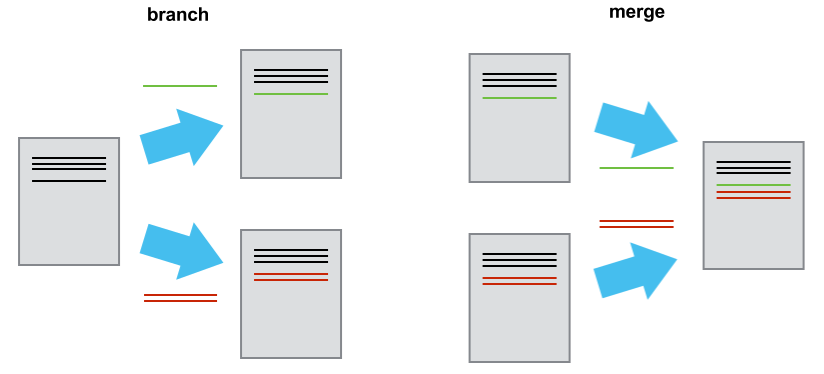What is Version Control?
Do you have files like final.txt, final_revised.txt, final_revised2.txt, final_revised2_revised.txt?


This is a sort of “local version control system” which depends on your memory and organization to avoid errors and utter confusion. Luckily, we have software that can handle this task, from the basic “track changes” to big centralized systems such as SVN.
A version control system records the history of what changes are made to a folder of files, who made them, and why to facilitate development and collaboration on a project. The version control system allows you to explore that history to better understand the project’s development and the choices made along the way, and to debug issues or undo errors.
Version control WILL make your life better!
What is Git?
Git is a free, distributed version control system originally developed for coordinating huge software development projects (specifically the Linux kernel). However, it is fast and flexible enough to be used on any scale project (be it your personal notes, your research lab’s code, your enterprise software source code, or your detailed plans for an intergalaxic empire)–and offers many benefits beyond “track changes”.
When using Git, your project will be stored in a normal folder of files (on your computer or in the cloud), called a Git repository (or “repo” for short). Git is distributed meaning that every copy of a repository contains the complete history. This is great for collaboration, fast performance, and offline usage.
Rather than storing a series of copies of a file with different filenames or revision numbers in the repo, Git captures a snapshot of your complete project each time you tell it to commit. Each commit records the creator, email, time, and changes made, then stores it permanently in the history.

Try to think of your changes recorded in each commit as separate from the document itself. From Git’s point of view, the current file that you see in your folder is made up of a specific set of those changes. It can reconstruct other versions by jumping to earlier commits, while the complete history of your project is always safely stored in a hidden “.git” directory.
This allows Git to efficiently branch, compare, and merge different sets of changes together, enabling people to work in parallel and sync their files.

When committing to a repository Git only adds data, it never deletes information. This makes almost everything undoable. With Git you can make changes and experiment without fear!
Git works best tracking plain text files.
All code (.c, .py, .r, .html, .md, etc) is plain text.
Most images, video, or proprietary document formats (such as Word’s .docx) are not.
Some data formats (.csv, .tsv, .json, .yml, .xml, etc) are plain text, while most proprietary spreadsheet and database files are not (.xlsx, .mdb, etc).
Git can tell exactly what changes in a plain text file, but can not understand the insides of a binary file. It will know when a binary file is changed, but it can not give you the exact differences. Thus, Git is not optimal for managing Word docs, PDFs, or other binary files (and can lead to bloated repository sizes). You will generally want to actively edit and track those types of files in a different platform.
If you are creating documentation or content writing, consider using a plain text writing workflow using Markdown or LaTeX instead of a proprietary document format–it simplifies your life, makes writing easier and more sustainable!
Approach in This Workshop
Get Git aims to present a pragmatic, hands on introduction to Git covering the basics you need to know to use version control on your own projects. There are lots of fancy and complex things Git can do–but the basics are truly all you need for 99% of collaborating and daily use (outside of giant software projects).
To provide a solid understanding of these basics, this workshop introduces the workflow using Git on the command line. Once you start regularly working with Git repos, you will likely use GUI helpers integrated into your text editor or stand alone apps such as GitHub Desktop. However, a good understanding of the fundamentals will help clarify how these tools and the file system work, and will be applicable across any GUI tool you use. So, while learning on the command line might sound intimidating, it will pay off in the end!